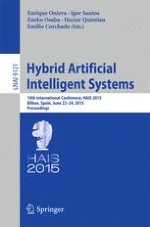2015 | OriginalPaper | Buchkapitel
Using Dalvik Opcodes for Malware Detection on Android
verfasst von : José Gaviria de la Puerta, Borja Sanz, Igor Santos, Pablo García Bringas
Erschienen in: Hybrid Artificial Intelligent Systems
Aktivieren Sie unsere intelligente Suche, um passende Fachinhalte oder Patente zu finden.
Wählen Sie Textabschnitte aus um mit Künstlicher Intelligenz passenden Patente zu finden. powered by
Markieren Sie Textabschnitte, um KI-gestützt weitere passende Inhalte zu finden. powered by
